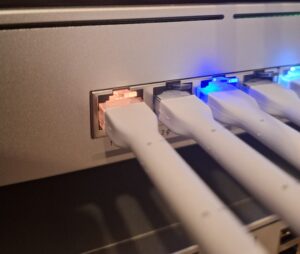
A strange thing happened yesterday in Singapore, when a slew of new broadband offerings became available at competitive prices, over the country’s new fibre optic network being extended to homes and offices.
The new next-gen network, four years in the making, is now starting to be available to homes and offices, which are being progressively hooked up. By mid-2012, 95 per cent of the island will be wired up.
Since the new network, partly funded by taxpayers’ dollars, mandates an open wholesale price for all telcos, no single operator gets preferential rates to use and resell the bandwidth provided by it. This means a level playing field for all telcos, and better deals for consumers down the stream.
After years of being tied to either StarHub or SingTel – other operators could not price things lower because they were wholesaling from the duopolies – users can actually see some real choices for their high-speed links at home.
Whether you think you will use all that speed, or if the speed actually makes a difference to the way your use the Net, the benefits are real. Prices are expected to eventually fall even for low-end plans.
Already, we have seen top-end plans – the previous fastest 100Mbps cable modem plan from StarHub – being made unattractive by cheaper and faster offerings on the new network. Prices for slower services are expected to follow suit, as more higher-speed offerings come to market and exert pressure on prices.
Here’s a slice of what we have seen from the five operators rolling out fibre-to-the-home (FTTH) services so far for consumers. At the moment, it’s hard to always get apples-to-apples comparison, because operators are offering services at several different speeds.
| SingTel | StarHub | M1 | SuperInternet | LGA |
| 150Mbps download 75Mbps upload | 100Mbps 50Mbps upload | 100Mbps 50Mbps upload | 100Mbps 50Mbps upload | TBA next month |
| S$85.90 | S$68.27 | S$59 | S$53.50 | – |
| more info | more info | more info | more info | more info |
SingTel also offers a 200Mbps service for about S$100 (with mio TV programme bundles). Meanwhile, M1 has a 1,000Mbps service, which comes with a crazy S$399 monthly price tag. Strictly for those running a data centre at home!
UPDATE: StarHub has also launched its fibre-based services, ranging from 100Mbps to 1Gbps. It is more expensive than M1 at the 100Mbps level, and has a 1Gbps home plan at S$395.90.





A typical server hosted in SG datacenter most likely will only be using something between 1 to 10 mbps, with a price tag of SGD150/mbps. Hence no matter how fast your home connection is, there’s no difference when the content provider couldn’t provide you content at that speed.
@ average user, you are absolutely right. The bandwidth on offer here – the 100Mbps or 200Mbps or more – is more than what most content providers (download sites, video sites or others) can offer to you at the moment. So the only way to benefit from the bigger pipe is if you got several users at home all, er, turning on the tap, so to speak.
If you don’t need the bandwidth, don’t subscribe to the faster new plans. Don’t get locked in to an old one. Just stay put – StarHub already said it would revise the old cable modem prices. These will give enough bandwidth, at a lower price, when new offers appear in the coming weeks and months.
Higher end fibre broadband plans probably includes value added services like video on demand, video conferencing, tv and so on, that is probably why the speeds offered are so high. For basic users, the only way to benefit from those kind of speed would be if there were multiple users who need to log on at the same time to local websites or for office work.
the question is about reliability, i find that even more important
whether I get 100 or 200 Mps but if the connection gets constantly
interrupted its not worth it, even if it was free.
The Singtel plan rates seem to have a different for ‘International’ Internet access separate from their Download/Upload capacities.
For their $85.90 express 150 plan, the maximum download/upload? rate for international sites seems to be 15Mbps. Given that the majority of internet servers/services are outside Singapore, I don’t really see how the offering is an advantage over currently ADSL plans.